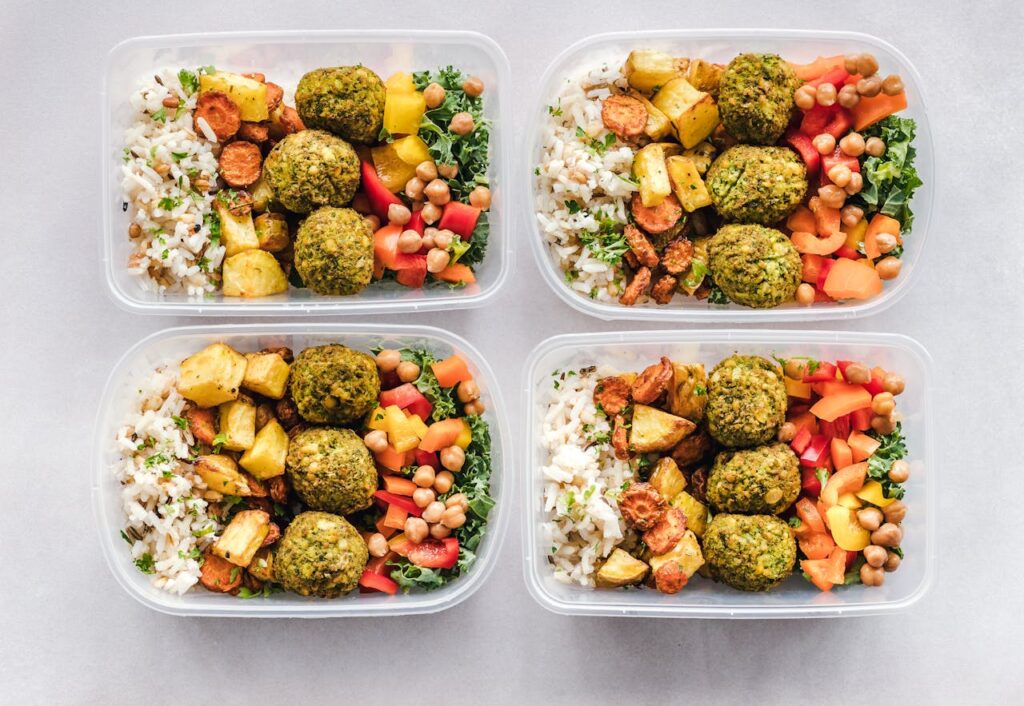How Can Seniors Eat Healthy On A Budget?
Seniors can eat healthy on a budget by planning meals in advance, buying in bulk, and choosing seasonal produce. Opt for generic brands and limit processed foods to save money. Incorporate plant-based proteins and use leftovers creatively. Batch cooking and freezing portions can reduce costs and time spent in the kitchen. Additionally, seniors can utilize food assistance programs like Meals on Wheels, SNAP, and local food pantries. Taking advantage of senior discounts, coupons, and farmers’ market deals can also help stretch the budget while ensuring access to nutritious, balanced meals.

As people age, maintaining a healthy diet becomes increasingly important to support overall health, energy levels, and chronic disease management. However, for many seniors, living on a fixed income can make it challenging to afford nutritious foods. This article explores cost-effective meal planning and nutrition strategies, providing budget-friendly grocery shopping tips, meal prep ideas, and information on food assistance programs like Meals on Wheels.
Budget-Friendly Grocery Shopping Tips
Maintaining a healthy diet on a budget is achievable with strategic planning and smart shopping habits. Here are some tips to help seniors make the most of their grocery budget while ensuring they get the nutrition they need.
Plan Your Meals: Planning meals for the week can help you create a precise shopping list, avoiding impulse buys and ensuring you only purchase what you need. Focus on balanced meals that include a variety of food groups.
Buy in Bulk: Staple items such as rice, pasta, beans, and oats are often cheaper when bought in bulk. These items have a long shelf life and can be used in numerous recipes.
Shop Seasonal Produce: Seasonal fruits and vegetables are typically fresher and more affordable. Visit local farmers’ markets for the best deals on seasonal produce.
Use Coupons and Discounts: Take advantage of coupons, store loyalty programs, and senior discounts. Many stores offer weekly deals and digital coupons that can lead to significant savings.
Choose Generic Brands: Generic or store brands often provide the same quality as name brands at a lower cost. Compare labels to ensure you are getting the same nutritional value.
Limit Processed Foods: Processed and pre-packaged foods are often more expensive and less nutritious. Focus on whole foods and prepare meals from scratch whenever possible.
Frozen and Canned Options: Frozen and canned fruits and vegetables can be just as nutritious as fresh ones and are usually cheaper. Look for options without added sugars or sodium.
Meal prepping is an excellent way for seniors to save time and money while ensuring they have nutritious meals ready to go. Here are some practical meal prep ideas that can simplify the cooking process and maximize budget efficiency.
Batch Cooking: Prepare large quantities of food at once and store individual portions in the freezer. Dishes like soups, stews, casseroles, and chili can be made in bulk and provide multiple meals.
Simple, Nutritious Recipes: Focus on recipes that require minimal ingredients and are easy to prepare. Stir-fries, sheet pan meals, and one-pot dishes are excellent options that save both time and money.
Use Leftovers Creatively: Repurpose leftovers to create new meals. For example, a roast chicken can become chicken salad or added to a stir-fry, and cooked vegetables can be incorporated into an omelet or soup.
Breakfast Options: Prepare a large batch of oatmeal or breakfast burritos and freeze them in individual portions. Smoothies with frozen fruits, spinach, and a scoop of protein powder can also be quick, nutritious options.
Healthy Snacks: Prepare healthy snacks like trail mix, yogurt with fruit, or sliced vegetables with hummus. Store them in portion-sized containers for easy access throughout the week.
Slow Cooker and Instant Pot: Utilize appliances like slow cookers and Instant Pots for easy meal prep. These devices allow you to prepare meals with minimal effort, freeing up time for other activities.
How To Make A Healthy Cheap Meal Plan - Recipes
Creating a healthy, budget-friendly meal plan involves smart planning, efficient shopping, and simple cooking techniques. Below is a one-week meal plan with recipes that are nutritious and cost-effective.
| Day | Meal | Recipe |
|---|---|---|
| Day 1 | Breakfast | Overnight Oats: 1/2 cup rolled oats, 1 cup milk (dairy or non-dairy), 1/2 banana (sliced), 1 tablespoon chia seeds. Combine all ingredients in a jar, refrigerate overnight, and enjoy cold in the morning. |
| Lunch | Chickpea Salad Sandwich: 1 can chickpeas (drained and mashed), 1/4 cup Greek yogurt, 1 tablespoon mustard, 1 celery stalk (diced), salt and pepper to taste, whole grain bread. Mix chickpeas, yogurt, mustard, and celery. Season with salt and pepper, then serve on whole grain bread. | |
| Dinner | Vegetable Stir-Fry: 1 cup brown rice, 2 cups mixed vegetables (carrots, broccoli, bell peppers), 2 tablespoons soy sauce, 1 tablespoon olive oil. Cook brown rice according to package instructions. Sauté vegetables in olive oil, add soy sauce, and serve over rice. | |
| Day 2 | Breakfast | Smoothie: 1 cup frozen berries, 1 banana, 1 cup spinach, 1 cup water or milk. Blend all ingredients until smooth. |
| Lunch | Lentil Soup: 1 cup lentils, 1 carrot (diced), 1 celery stalk (diced), 1 onion (diced), 4 cups vegetable broth, 1 tablespoon olive oil. Sauté onion, carrot, and celery in olive oil. Add lentils and broth, simmer for 20-30 minutes. | |
| Dinner | Baked Chicken with Vegetables: 2 chicken breasts, 2 cups mixed vegetables (potatoes, carrots, green beans), 1 tablespoon olive oil, salt, pepper, and herbs to taste. Season chicken and vegetables with olive oil, salt, pepper, and herbs. Bake at 400°F for 25-30 minutes. | |
| Day 3 | Breakfast | Yogurt Parfait: 1 cup yogurt, 1/2 cup granola, 1/2 cup mixed berries. Layer yogurt, granola, and berries in a bowl or jar. |
| Lunch | Quinoa Salad: 1 cup cooked quinoa, 1 cucumber (diced), 1 bell pepper (diced), 1/4 cup feta cheese, 2 tablespoons olive oil, juice of 1 lemon. Mix all ingredients in a bowl and toss with olive oil and lemon juice. | |
| Dinner | Black Bean Tacos: 1 can black beans (drained), 1 cup corn, 1 avocado (diced), 1 tomato (diced), whole grain tortillas. Heat beans and corn, then assemble tacos with avocado, tomato, and tortillas. | |
| Day 4 | Breakfast | Egg Muffins: 6 eggs, 1/2 cup spinach (chopped), 1/2 bell pepper (diced), salt and pepper to taste. Beat eggs and mix with spinach, bell pepper, salt, and pepper. Pour into a muffin tin and bake at 350°F for 20 minutes. |
| Lunch | Hummus and Veggie Wrap: whole grain tortilla, 1/4 cup hummus, 1/2 cucumber (sliced), 1/2 bell pepper (sliced), handful of spinach. Spread hummus on tortilla, add veggies, and roll up. | |
| Dinner | Spaghetti with Tomato Sauce: 1 box whole grain spaghetti, 1 can crushed tomatoes, 2 cloves garlic (minced), 1 tablespoon olive oil, basil and oregano to taste. Cook spaghetti according to package instructions. Sauté garlic in olive oil, add tomatoes and herbs, simmer for 10 minutes, and serve over pasta. | |
| Day 5 | Breakfast | Peanut Butter Banana Toast: 2 slices whole grain bread, 2 tablespoons peanut butter, 1 banana (sliced). Spread peanut butter on toast and top with banana slices. |
| Lunch | Tuna Salad: 1 can tuna (drained), 1/4 cup Greek yogurt, 1 tablespoon mustard, 1 celery stalk (diced), salt and pepper to taste. Mix all ingredients and serve on a bed of greens or whole grain bread. | |
| Dinner | Stuffed Bell Peppers: 4 bell peppers (tops removed and seeds removed), 1 cup cooked brown rice, 1 cup black beans, 1/2 cup corn, 1/2 cup salsa, 1/4 cup shredded cheese. Mix rice, beans, corn, and salsa. Stuff peppers with the mixture, top with cheese, and bake at 375°F for 25 minutes. | |
| Day 6 | Breakfast | Chia Seed Pudding: 1/4 cup chia seeds, 1 cup milk (dairy or non-dairy), 1 tablespoon honey. Mix all ingredients and refrigerate overnight. Top with fruit before serving. |
| Lunch | Veggie Pasta Salad: 2 cups cooked pasta, 1 cup cherry tomatoes (halved), 1/2 cucumber (diced), 1/4 cup feta cheese, 2 tablespoons olive oil, 1 tablespoon vinegar. Toss all ingredients together in a bowl. | |
| Dinner | Chicken and Broccoli Stir-Fry: 2 chicken breasts (sliced), 2 cups broccoli florets, 2 tablespoons soy sauce, 1 tablespoon olive oil. Sauté chicken in olive oil, add broccoli, and soy sauce. Cook until chicken is done and broccoli is tender. | |
| Day 7 | Breakfast | Oatmeal with Fruit: 1/2 cup rolled oats, 1 cup water or milk, 1/2 cup mixed berries, 1 tablespoon honey. Cook oats in water or milk, top with berries and honey. |
| Lunch | Egg Salad Sandwich: 2 hard-boiled eggs (chopped), 2 tablespoons Greek yogurt, 1 teaspoon mustard, salt and pepper to taste, whole grain bread. Mix eggs, yogurt, mustard, salt, and pepper. Serve on whole grain bread. | |
| Dinner | Vegetable Soup: 1 cup mixed vegetables (carrots, celery, onions), 1 can diced tomatoes, 4 cups vegetable broth, 1 tablespoon olive oil, salt, pepper, and herbs to taste. Sauté vegetables in olive oil, add tomatoes and broth, and simmer for 20-30 minutes. |
How To Make A Healthy Cheap Meal Plan - Recipes
Start by planning your meals for the week. Create a list of recipes and ingredients you will need, focusing on affordable and nutritious options.
Buy in bulk, choose generic brands, use coupons and store discounts, and shop for seasonal produce. Avoid processed foods and opt for whole, unprocessed ingredients.
Beans, lentils, eggs, and tofu are great plant-based proteins. Chicken, canned tuna, and lean cuts of meat are also cost-effective options.
Incorporate plenty of vegetables, whole grains, and legumes. These are generally affordable and provide essential nutrients.
Yes, batch cooking allows you to prepare large quantities of food at once, reducing the cost per meal and saving time. Freeze portions for future use.
Slow cookers, Instant Pots, and blenders can help you prepare meals efficiently and with minimal effort.
Plan your meals to use up all the ingredients you buy. Use leftovers creatively and store food properly to extend its shelf life.
Prepare snacks like yogurt with fruit, homemade trail mix, and sliced vegetables with hummus. These are inexpensive and easy to make.
Absolutely. Programs like Meals on Wheels, SNAP, and local food pantries provide nutritious food at little to no cost, helping seniors maintain a healthy diet.
Conclusion
Cost-effective meal planning and nutrition are achievable for seniors, even on a limited budget. By employing smart grocery shopping strategies, meal prepping efficiently, and taking advantage of available food assistance programs, seniors can maintain a healthy diet without financial strain. Access to nutritious food is essential for maintaining good health and quality of life in the golden
Related Articles

What is Palliative Care?
Palliative care is a specialized medical care approach focused on providing relief from the symptoms and stress of a serious illness.

Understanding Assisted Living
Assisted living provides older adults with a residential option that combines housing, personal care, and health services.

Introduction to Nursing Homes
Assisted living offers daily support and independence; nursing homes provide 24/7 medical care;

Benefits of Yoga for Seniors
Discover how yoga can enhance flexibility, balance, and mental well-being





